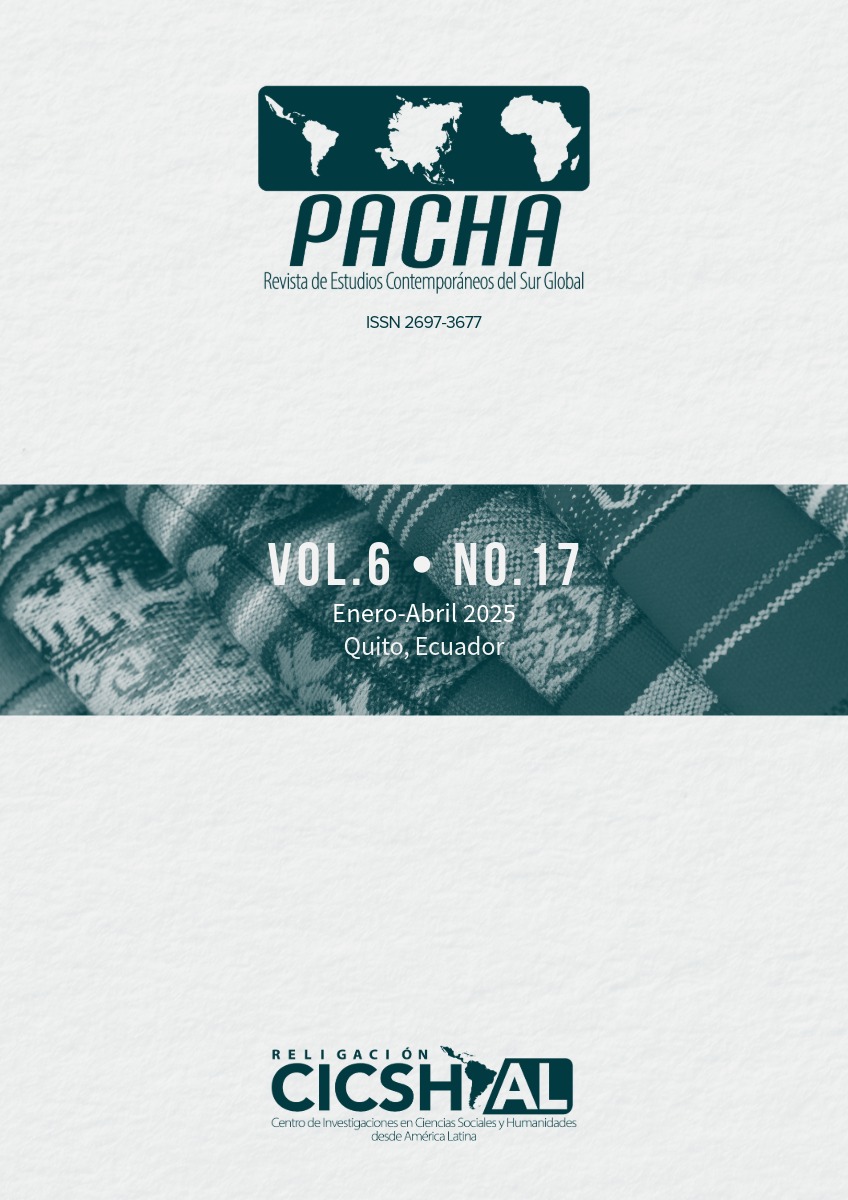Resumen
En décadas pasadas, la enseñanza tradicional implicaba principalmente la interacción profesor-alumno. Sin embargo, hoy en día se aplican nuevos enfoques en el aula. En este trabajo de investigación se analiza el aprendizaje combinado, ya que fusiona prácticas de enseñanza y aprendizaje convencionales y tecnológicas. El estudio examina cómo este método impacta en la adquisición de la gramática entre estudiantes adultos A2 de inglés como lengua extranjera (EFL) en un centro de certificación en Cuenca, Ecuador. Por lo tanto, el estudio empleó pruebas previas y posteriores, encuestas de escala Likert y entrevistas semiestructuradas para evaluar el progreso de los estudiantes y recoger sus comentarios. Para medir el aprendizaje de idiomas, todos los instrumentos de evaluación se ajustaron a los estándares del Marco Común Europeo de Referencia para las Lenguas (MCER). Durante seis semanas, ocho participantes de entre 18 y 35 años asistieron a tres clases semanales de gramática combinada. Incluían actividades en línea e instrucción clásica. Los datos cualitativos ofrecieron información sobre las experiencias de los alumnos. Pusieron de relieve los diferentes beneficios y retos a los que se enfrentaban los estudiantes al aprender gramática mediante el aprendizaje combinado. Los resultados revelaron que el enfoque mejoró el desarrollo de la gramática e identificó las áreas que requieren mejoras. El estudio se suma al debate en curso sobre el papel de la tecnología en la enseñanza de lenguas extranjeras y ofrece recomendaciones prácticas para las prácticas de enseñanza de EFL.
Citas
Akobir, Q., & Akhmedjanova, D. (2023). English grammar: understanding, learning, developing. Zenodo. CERN European Organization For Nuclear Research. https://doi.org/10.5281/zenodo.8052325
Ali, A., Khan, R., & Alouraini, A. (2023). A comparative study on the impact of online and blended learning. SAGE Open, 13(1). https://doi.org/10.1177/21582440231154417
Aravind, B. (2024). Exploring the challenges and opportunities of blended learning in a technology-enabled education environment. Journal of Effective Teaching and Learning Practices, 1(1). https://doi.org/10.70372/jetlp.v1i1.aravind
Deng, M., & Chen, K. (2024). Research on the application of Internet+-based blended teaching mode in English grammar teaching. Applied Mathematics and Nonlinear Sciences, 9(1). https://doi.org/10.2478/amns-2024-2021
Duraipandi, O., & Murugan, A. (2024). Role of Digital Communication in Learning the English language. Recent Research Reviews Journal, 3(1), 258-273. https://doi.org/10.36548/rrrj.2024.1.017.
Eppler, E., & Weichselbaumer, C. (2019). Developing digital literacy in online grammar teaching and learning. Journal of Educational Technology, 15(2), 45–60. https://doi.org/10.xxxx/jet.2019.15.2.45
Fionasari, R. (2024). Blended learning environments: A systematic review of effective strategies in educational settings. International Journal of Multidisciplinary Approach Sciences and Technologies, 1(1). https://doi.org/10.62207/gn00ce77
Fotos, S., & Ellis, R. (1991). Communicating about Grammar: A task-based approach. TESOL Quarterly, 25(4), 605–628. https://doi.org/10.2307/3587079
Garrison, D. R., & Vaughan, N. D. (2008). Blended learning in higher education: Framework, principles, and guidelines. Jossey-Bass.
Graham, C. R. (2006). Blended learning systems: Definition, current trends, and future directions. In C. J. Bonk, & C. R. Graham, (eds.). The handbook of blended learning: Global perspectives, local designs (pp. 3–21). Pfeiffer.
Ginns, P., & Leppink, J. (2019). Special issue on cognitive load theory: Editorial. Educational Psychology Review, 31(2), 255–259. https://doi.org/10.1007/s10648-019-09474-4
Hausmann-Ushkova, N., Shults, O., & Pervova, G. (2024). Providing students with feedback during online language projects. Tambov University Review. Series: Humanities, 29(2), 337–348.
Hockly, N. (2018). Blended learning. ELT Journal, 72(1), 97–101. https://doi.org/10.1093/elt/ccx058
Jia, L. (2012). Comparison between input hypothesis and interaction hypothesis. Journal of Language Studies, 12(1), 26–27.
John-Steiner, V., & Mahn, H. (1996). Sociocultural approaches to learning and development: A Vygotskian framework. Educational Psychologist, 31(3), 191–206. https://doi.org/10.1080/00461520.1996.9653266
Knowles, M. S. (1984). The adult learner: A neglected species. Gulf Publishing.
Krashen, S. D. (1985). The input hypothesis: Issues and implications. Longman.
Long, M. H. (1981). Input, interaction, and second-language acquisition. Annals of the New York Academy of Sciences, 379(1), 259–278. https://doi.org/10.1111/j.1749-6632.1981.tb42014.x
Lourenço, O. (2012). Piaget and Vygotsky: Many resemblances, and a crucial difference. New Ideas in Psychology, 30(3), 281–295. https://doi.org/10.1016/j.newideapsych.2011.12.006
Ma, L., & Lee, C. S. (2021). Evaluating the effectiveness of blended learning using the ARCS model. Journal of Computer Assisted Learning, 37(5), 1397–1408. https://doi.org/10.1111/jcal.12579
Motlagh, M., Zavaraki, E., Vahedi, M., Noroozi, A., Bakhtiarvand, M., & Azizi, Y. (2023). The impact of blended collaborative learning on the English reading comprehension. Randwick International of Education and Linguistics Science Journal, 4(1). https://doi.org/10.47175/rielsj.v4i1.608
Paas, F., Renkl, A., & Sweller, J. (2004). Cognitive load theory: Instructional implications of the interaction between information structures and cognitive architecture. Instructional Science, 32(1), 1–8.
Portales, I., Roldán, E., & Corona, J. (2022). Theoretical perspective of level A2 of the English language. TECTZAPIC. Revista Académico-Científica, 1(1). https://doi.org/10.51896/tectzapic/jsce6479
Qizi, D. (2023). The role of grammar in learning English language. American Journal of Social Sciences and Humanity Research, 3(5). https://doi.org/10.37547/ajsshr/volume03issue05-21
Saidi, F. (2024). On the scope, claims and implicationsof Krashen’s theory. International Journal of Research and Innovation in Social Science, 8(1). https://doi.org/10.47772/ijriss.2024.801184
Sarnato, A., Sari, W., Rahmawati, S., Hidayat, R., & Patry, H. (2024). The evolution of e-learning platforms: From u-learning to AI-driven adaptive learning systems. Journal of Social Science Utilizing Technology, 2(2). https://doi.org/10.70177/jssut.v2i2.1131
Stavre, B., & Pashko, A. (2016). Introducing grammar learning strategies in A2 and B1 classes of English as a foreign language: An Albanian case study. CBU International Conference Proceedings. https://doi.org/10.12955/cbup.v4.795
Susiyawati, E., Erman, E., Astriani, D., & Rahayu, D. (2024). Facilitating flexible learning: A study of students’ perceptions of synchronous and asynchronous blended learning. Journal of Education and e-Learning Research, 11(2). https://doi.org/10.20448/jeelr.v11i2.5676
Vallée, A., Blacher, J., Cariou, A., & Sorbets, E. (2020). Blended learning compared to traditional learning in medical education: Systematic review and meta-analysis. Journal of Medical Internet Research, 22(8). https://doi.org/10.2196/16504
Vygotsky, L. S. (1978). Mind in society: Development of higher psychological processes. Harvard University Press.
Wang, Q., & Huang, Q. (2024). Engaging online learners in blended synchronous learning: A systematic literature review. IEEE Transactions on Learning Technologies, 17(3), 594–607. https://doi.org/10.1109/TLT.2023.3282278
Yajie, C., & Jumaat, N. (2023). Blended learning design of English language course in higher education: A systematic review. International Journal of Information and Education Technology, 13(2). https://doi.org/10.18178/ijiet.2023.13.2.1815

Esta obra está bajo una licencia internacional Creative Commons Atribución-NoComercial-SinDerivadas 4.0.
Derechos de autor 2025 Blanca Verónica Palaguachi Sáenz, Manuel Pila




